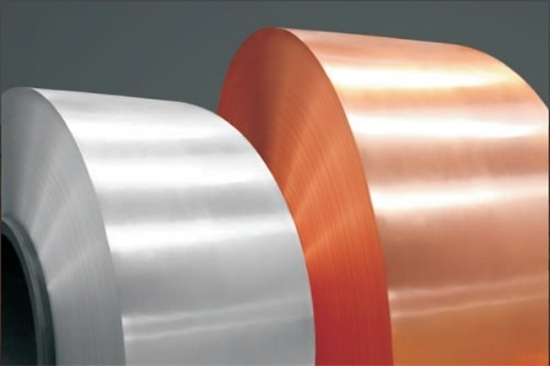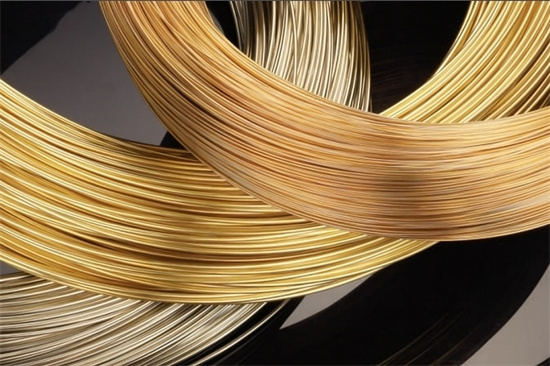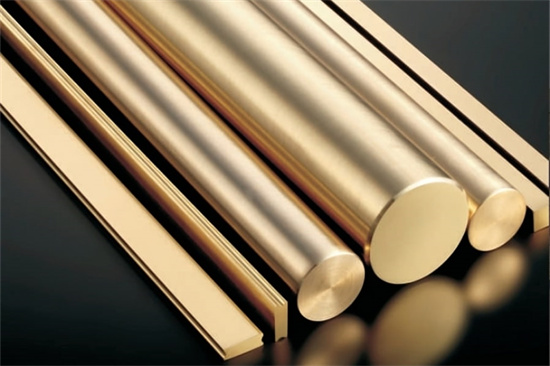


CuSn8: A Comprehensive Guide to This Incredible Alloy
Low MOQ
Provide low minimum order quantity to meet different needs.
OEM & ODM
Provide customized products and design services to meet unique customer needs.
Adequate Stock
Ensure fast order processing and provide reliable and efficient service.
Customer Satisfaction
Provide high quality products with customer satisfaction at the core.
share this article
Table of Contents
If you’re diving into the world of copper alloys, chances are you’ve come across CuSn8, also known as phosphor bronze. This alloy, a blend of copper (Cu) and tin (Sn), is well-known for its high strength, excellent fatigue resistance, and outstanding corrosion resistance. Whether you’re working in marine engineering, automotive applications, or electrical industries, CuSn8 is one of the most reliable materials, offering a unique balance of durability and workability.
In this comprehensive guide, we’ll explore everything you need to know about CuSn8. From its composition and mechanical properties to its applications, specifications, and pricing, this article will provide you with a clear understanding of why CuSn8 is a top-tier choice for many industries. If you’re an engineer, materials specialist, or someone just looking to learn more, you’re in the right place!
Overview
CuSn8 is a phosphor bronze alloy containing approximately 8% tin. Known for its high tensile strength, excellent wear resistance, and great corrosion resistance, it outperforms many other copper alloys, especially in applications where durability and reliability are critical. Its phosphorus content enhances machinability and fatigue resistance, making it a preferred choice for parts that experience high loads and repetitive stress.
Key Characteristics :
- High Strength: Stronger than most copper alloys, ideal for high-stress applications.
- Excellent Fatigue Resistance: Performs well under repeated loading, making it suitable for springs and connectors.
- Outstanding Corrosion Resistance: Particularly effective in marine and industrial environments.
- Good Wear Resistance: Its low friction coefficient makes it suitable for components that experience wear and tear.
- Moderate Electrical Conductivity: Used in electrical applications where mechanical strength is also important.
Composition and Properties
Understanding the composition and properties of CuSn8 is essential for selecting the right material for your project. Let’s break down the chemical composition and take a closer look at its mechanical and physical properties.
Chemical Composition
The composition of CuSn8 is highly controlled to ensure it delivers exceptional performance in demanding environments. The primary elements are copper and tin, with a small amount of phosphorus added to enhance specific properties.
| Element | Percentage (%) |
|---|---|
| Copper (Cu) | 91.2 – 92.0 |
| Tin (Sn) | 7.5 – 8.5 |
| Phosphorus (P) | 0.01 – 0.4 |
- Copper (Cu): Provides the base material with ductility, thermal conductivity, and workability.
- Tin (Sn): Adds strength, corrosion resistance, and wear resistance.
- Phosphorus (P): Improves machinability and fatigue resistance.
Mechanical and Physical Properties
The mechanical and physical properties of CuSn8 make it ideal for a wide range of applications. Below is a detailed table outlining some of the key parameters:
| Property | Typical Value |
|---|---|
| Tensile Strength | 550 – 700 MPa |
| Yield Strength | 300 – 400 MPa |
| Elongation | 10 – 20% |
| Hardness | 110 – 220 HV |
| Density | 8.80 g/cm³ |
| Thermal Conductivity | 40 – 60 W/mK |
| Electrical Conductivity | 12 – 15% IACS |
| Fatigue Resistance | High |
| Corrosion Resistance | Very High |
Why These Properties Matter
These properties make CuSn8 a go-to material in industries where strength, wear resistance, and corrosion resistance are paramount. For instance, its high tensile strength ensures it can withstand mechanical stresses without deforming, while its outstanding fatigue resistance makes it perfect for components like springs and electrical connectors that undergo repetitive strain.
Applications: Where and How It’s Used
Thanks to its unique set of properties, CuSn8 is used in a wide variety of industries and applications. Let’s explore some common uses and how this alloy performs in each sector.
Common Applications
| Industry | Applications |
|---|---|
| Marine | Bearings, bushings, propeller shafts, fasteners |
| Electrical | Connectors, springs, switch components |
| Automotive | Valve guides, gears, springs |
| Aerospace | Precision components, fasteners |
| Musical Instruments | Strings, reed instruments |
| Industrial Engineering | Gears, bearing cages, wear plates |
Why CuSn8 Fits These Applications
- Marine: CuSn8 performs exceptionally well in marine environments due to its corrosion resistance and wear resistance. It’s commonly used in bearings, bushings, and propeller shafts, where it can handle both saltwater exposure and mechanical stress.
- Electrical: The alloy’s moderate electrical conductivity and high fatigue resistance make it ideal for electrical connectors and springs in switches and relays.
- Automotive: In the automotive industry, CuSn8 is frequently used in valve guides, gears, and springs, thanks to its strength and wear resistance under high loads and temperatures.
- Aerospace: Precision parts in aerospace engineering rely on CuSn8 for its strength, corrosion resistance, and ability to withstand high stresses in demanding environments.
- Musical Instruments: The alloy’s acoustic properties and resistance to wear make it a favorite for musical strings and reed instruments.
Specifications, Sizes, and Grades
When selecting CuSn8 for your project, it’s crucial to understand the available specifications, sizes, and grades. Below, we provide a detailed overview of the options available for this alloy.
Specifications and Sizes
| Specification | Details |
|---|---|
| Form | Sheets, strips, rods, wires, bars |
| Thickness Range (Sheets) | 0.2 mm to 10 mm |
| Diameter Range (Rods) | 1 mm to 150 mm |
| Temper | Annealed, cold-worked, hard |
| Standards | ASTM B103, DIN 17662, EN 1652 |
Grades
| Grade | Key Characteristics |
|---|---|
| CuSn8-Soft (Annealed) | High ductility, suitable for deep drawing and forming |
| CuSn8-Hard (Cold-Worked) | Increased strength, used in wear-resistant applications |
| CuSn8-Extra Hard | Maximum strength, ideal for high-load, wear-intensive applications |
Why Specifications Matter
Choosing the right form and grade is critical for optimizing performance and cost-efficiency. For example, soft, annealed CuSn8 is ideal for components that require deep drawing or forming, while harder grades are better suited for high-strength and wear-resistant applications, such as bearings and gears.
Suppliers and Pricing
When sourcing CuSn8, selecting the right supplier and understanding the pricing is crucial to ensure you get the best value for your investment. Below, we provide a list of prominent suppliers and estimated pricing for CuSn8.
Suppliers and Pricing Details
| Supplier | Location | Price Range (per kg) | Delivery Time |
|---|---|---|---|
| PhosphorBronze Ltd. | USA | $15 – $25 | 2-3 weeks |
| EuroAlloys Ltd. | Europe | €12 – €20 | 1-2 weeks |
| AsiaMet Corp. | China | $13 – $22 | 3-4 weeks |
| GlobalMetals Ltd. | India | $10 – $18 | 2-4 weeks |
| MarineAlloys UK | UK | £13 – £22 | 1-2 weeks |
Factors Affecting CuSn8 Pricing
- Form: The final cost varies depending on whether you purchase sheets, rods, wires, or strips.
- Grade: Higher-strength grades, such as cold-worked or extra-hard CuSn8, generally cost more due to additional processing.
- Quantity: Bulk purchases typically result in lower per-unit pricing, so larger orders can be more cost-effective.
- Delivery Time: Expedited shipping can significantly increase the overall cost, so it’s important to plan ahead.
Advantages and Limitations
Like any material, CuSn8 has its advantages and limitations. Understanding these factors will help you determine whether CuSn8 is the right choice for your application.
Advantages and Limitations
| Advantages | Limitations |
|---|---|
| Outstanding corrosion resistance | More expensive than brass or standard bronze |
| High strength and wear resistance | Lower electrical conductivity compared to pure copper |
| Excellent machinability | Requires precise heat treatment to optimize properties |
| Great fatigue resistance | Limited thermal conductivity |
| High ductility in annealed condition | May require surface treatments for aesthetic purposes |
Is CuSn8 Right for Your Project?
If you need a material with high strength, durability, and corrosion resistance, it is a solid choice. However, if your project requires higher electrical conductivity or thermal performance, you might want to consider alternatives such as pure copper or brass.
CuSn8 vs. Other Copper Alloys: A Comparison
Choosing the right alloy often involves comparing it to other materials. Let’s see how it stacks up against other common copper alloys like CuSn6, CuZn37 (Brass), and CuNi10 (Copper-Nickel).
CuSn8 vs. CuSn6 vs. Brass vs. Copper-Nickel
| Property | CuSn8 | CuSn6 | Brass (CuZn37) | Copper-Nickel (CuNi10) |
|---|---|---|---|---|
| Tensile Strength | 550 – 700 MPa | 400 – 600 MPa | 300 – 450 MPa | 300 – 550 MPa |
| Yield Strength | 300 – 400 MPa | 250 – 350 MPa | 100 – 250 MPa | 200 – 350 MPa |
| Corrosion Resistance | Very High | High | Moderate | Excellent (especially in marine environments) |
| Electrical Conductivity | 12 – 15% IACS | 10 – 15% IACS | 28% IACS | 5 – 10% IACS |
| Wear Resistance | Very High | High | Moderate | High |
| Cost | High | Moderate | Low | High |
| Applications | Marine, electrical, automotive | Marine, electrical, automotive | Plumbing, decorative items | Marine, heat exchangers, piping |
Key Takeaways from the Comparison
- It offers superior strength, wear resistance, and corrosion resistance, making it a better choice for high-stress and marine applications compared to CuSn6.
- Brass (CuZn37) is a more affordable option with better electrical conductivity, but lacks the wear resistance and corrosion resistance of CuSn8.
- Copper-Nickel (CuNi10) is excellent for marine environments, especially where seawater corrosion is a concern, but it’s generally more expensive than CuSn8.
Frequently Asked Questions (FAQ)
Here are some of the most commonly asked questions about CuSn8:
| Question | Answer |
|---|---|
| What is CuSn8 used for? | It is widely used in marine hardware, electrical components, springs, and automotive parts. |
| How much does CuSn8 cost? | The price of CuSn8 ranges from $10 to $25 per kg, depending on the form, grade, and supplier. |
| Is CuSn8 corrosion resistant? | Yes, it has excellent corrosion resistance, especially in marine environments and industrial atmospheres. |
| Can CuSn8 be used in electrical applications? | Yes, it offers moderate electrical conductivity and is commonly used in connectors, springs, and switch components. |
| Is CuSn8 easy to machine? | Yes, it is known for its good machinability, making it suitable for precision parts and mechanical components. |
| What’s the difference between CuSn8 and CuSn6? | It has a higher tin content (8%), offering better strength and wear resistance compared to CuSn6. |
Conclusion
It is a highly versatile and durable phosphor bronze alloy with an exceptional balance of strength, corrosion resistance, and wear resistance. Whether you’re working in marine hardware, electrical components, or automotive parts, this alloy offers outstanding performance in demanding environments.
While it may come at a higher cost compared to other copper alloys, its long-lasting durability and ability to withstand high loads and repetitive stress make it a cost-effective choice in the long term. If your project requires a material that can handle the harshest conditions without compromising on strength or resistance, it is likely the perfect alloy for the job.
Ultimately,it combines strength, versatility, and durability, making it a critical material in both industrial and marine applications.
Maybe you want to know more about our products, please contact us
Get Latest Price
About Met3DP
Product Category
HOT SALE
CONTACT US
Any questions? Send us message now! We’ll serve your request with a whole team after receiving your message.

Metal Powders for 3D Printing and Additive Manufacturing
COMPANY
PRODUCT
cONTACT INFO
- Qingdao City, Shandong, China
- [email protected]
- [email protected]
- +86 19116340731








